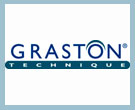When a ligament injury or weakness affects the vertebrae to the extent that they are unable to maintain their proper position, a vertebra can eventually slip out of place. This condition, usually seen in women 40+ years old, is called spondylolisthesis (spon-dee-low-lis-thee-sis), and is most often caused by degenerative disc disease. Surgery may be required if excessive bone slippage and nerve compression is involved.
How does Spondylolisthesis develop?
Genetics plays a large role with this condition. A very thin vertebral bone points to a precondition for the disease. Fast growth spurts, a ligament injury or ligament laxity can also result in bone slippage. Overuse is another culprit. Gymnastics, weight lifting and football, as well as other sports that put pressure on the lower back, can also be a catalyst. In addition, the constant hyperextension of the spine required of these sports can be very hard on the bones. Spondylolisthesis can also develop as a result of cerebral palsy and a process of degeneration of the vertebral joints.
What are the Symptoms of Spondylolisthesis?
It is possible for spondylolisthesis to have no symptoms whatsoever. When symptoms do occur, they have been compared to a muscle strain, in which the pain usually spreads across the lower back. Spondylolisthesis can also tighten the hamstring muscles and cause spasms that result in a stiff back. The nerves in the back may be compressed and the spinal canal narrowed if a considerable amount of slippage has occurred.
Conventional medical treatments may help relieve the symptoms of spondylolisthesis but they do not address the root of the problem. By strengthening structural weaknesses in the body, as natural therapies like Chiropractic do, spondylolisthesis can be healed or its symptoms relieved.
Discover why we believe that natural treatments are the best way to treat spondylolisthesis.
Natural vs. Modern Medicine’s Approach to Spondylolisthesis
Modern Medicine’s Approach to Spondylolisthesis
Since spondylolisthesis involves vertebral shifting or subluxation, the usual recommended treatment is rest and possibly even a brace or a body cast for up to six months. Not only is this a very unpopular treatment, but immobility and casting are tremendously detrimental to ligament healing. In other words, the problem with this approach is that it does not do anything to damaged ligaments and, thus, does not alleviate the chronic pain that people with this condition experience.
Another standard practice of modern medicine is to inject steroids or to prescribe anti-inflammatory medications. However, in the long run, these treatments do more damage than good. Cortisone shots and anti-inflammatory drugs have been shown to produce short-term pain benefit, but both result in long-term loss of function and even more chronic pain by actually inhibiting the healing process of soft tissues and accelerating cartilage degeneration. Plus, long-term use of these drugs can lead to other sources of chronic pain, allergies and leaky gut syndrome.
When all else fails, patients who experience chronic pain from spondylolisthesis may be referred to a surgeon. Unfortunately, surgery often makes the problem worse. Surgeons will use x-ray technology as a diagnostic tool, which does not always properly diagnose the pain source.
The Natural Approach to Spondylolisthesis
A better approach is to strengthen the weakened ligaments (the interspinous, supraspinous, iliolumbar and lumbosacral) in the lumbar area with Rehabilitative Exercises, Chiropractic, and nutritional supports, and occasionally in conjunction with kinesiotherapy or physiotherapy, such as abdominal muscle strengthening, flexion-type CORE exercises. Chronic pain is most commonly due to tendon and ligament weakness or cartilage deterioration.
The safest and most effective natural treatment for repairing tendon, ligament and cartilage damage is Chiropractic. In simple terms, Chiropractic stimulates the body to repair itself.
If you are interested in more information about natural treatments or to schedule an appointment, please contact Dr. Laboret at 972-671-5263.
Disclaimer: The preceding is to provide information about relief and the benefits that may be derived. It is not intended to claim a cure for any disease or condition. It should not take the place of your doctor’s advice or treatment.






